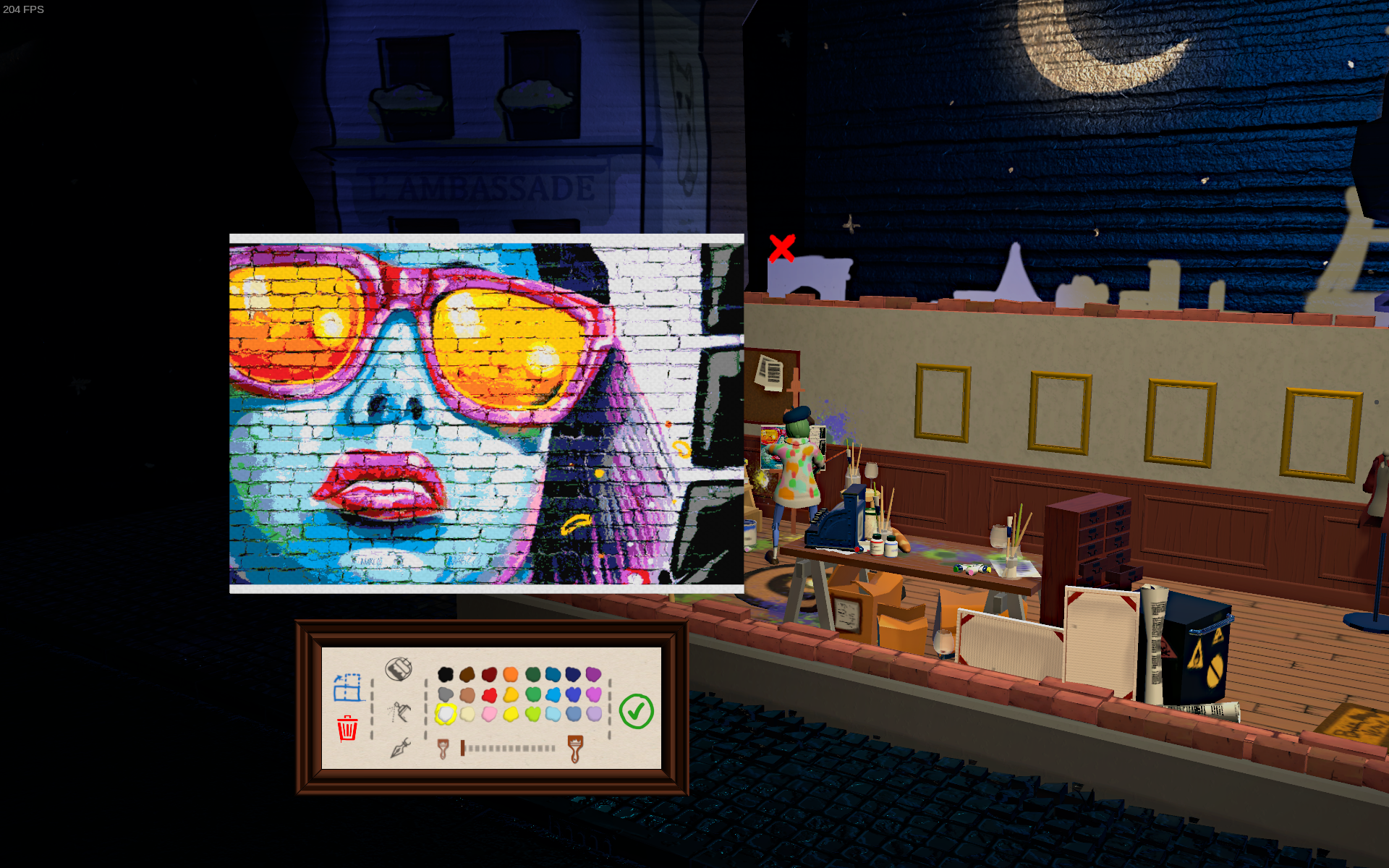
The next important thing is to have good brushes. A good canvas will be able to hold up to the rigors of oil painting, and it will also be able to provide a good surface for your paint to adhere to. When it comes to oil painting, the most important thing is to have a good canvas. In fact, it’s quite the opposite! Oil painting is a very rich and luxurious form of painting, and it can be extremely rewarding. That isn't the worst thing, but I do reckon it will put those looking for something deep off.There’s no starving involved when it comes to oil painting. The game really guides from point A to B without you having a say in the matter. I do think it is a shame that the story built around this tool set doesn't go any deeper. The situations that came of that are enjoyable, and it kept me engaged. I found it hilarious to make some silly art, and see how the inhabitants of Paris would react. While the presentation is fun, the real star is the artwork you create. Overall, Passpartout: The Starving Artist is a title to unwind with. This is how I usually spent my 25 minute commute as the tools are simple and fun. Next to the main campaign, Passpartout also offers an Endless Mode, allowing you to go deeper with the creation tools. The tools unlock naturally, and you can always talk the citizens into giving you just enough. This isn't a knock overall, but the game has a path in mind that it won't step away from. After a while, I also got more money than I knew what to do with. The types of citizens that come across will often say the same things with not much to help you differentiate between them. Sure, the game sees you going to better places, but the overall loop doesn't change much. Passpartout does offer some progression, but the overall impact is very minimal. Once this happens, you will leave the dirty garage behind for a proper studio. The right person, a critic, needs to come by to make an impact. The ultimate goal in The Starving Artist is to get noticed, and improve the man's life. You can rename the piece and give it a chance, or just throw it into the bin. At the end of the week, you will also get reminded of the artwork that simply isn't selling. Every week, the artist will have to pay rent, and also keep stock of the stereotypical French staples of baguettes and wine. This is to survive Passpartout's not so glamorous living conditions. With an ever growing selection tools available, you will have to rake in the cash. Within a span of ten minutes, a youngster said ''no passion'' while an olderly man absolutely adored it. There is something oddly fascinating to see characters in-game react to your creations. The creativity put into these pieces depends on the player, though surely everyone can draw to a certain extent.


You will use the various options at hand to create pieces and attract different types of crowds. The button controls feel accurate, but it is way less satisfying than moving your finger across the screen. Regardless of your control preference, the creation system works. This can be done with buttons in any of the modes, or on the Switch touchscreen.

In The Starving Artist, you will find yourself making artwork. It is one of those titles I gladly toy around with, though progression isn't the title's most apparent quality. A quirky little game see you making artwork, trying to sell said creations and surviving in the harsh reality of Paris. Case in point, we have Passpartout: The Starving Artist. That being said, there are genuinely good games that came out of the service. Cheaply made nonsense would hit the store in droves, and it became not a fun place to be. When you hear Steam Greenlight, the easiest association is “mistake”.


 0 kommentar(er)
0 kommentar(er)
